Short & Long Question Answers: Family and Community | Short & Long Answer Questions for Class 6 PDF Download
Short Question Answers
Q1: How do Indian languages show the closeness of family relationships?
Ans: Indian languages like Hindi and Tamil use specific terms to show family closeness. Words like bua (father’s sister), chacha (father’s younger brother), or nani (maternal grandmother) specify family roles. In most Indian languages, cousins are considered ‘brothers’ and ‘sisters’, emphasizing the deep bonds among family members. Tamil has different terms for elder and younger siblings, further highlighting the closeness. The vocabulary in Indian languages reflects a culture where families are tightly knit and relationships are clear and meaningful.
Q2: How does a nuclear family differ from a joint family?
Ans:
A nuclear family consists of parents and their children, sometimes with one parent and children.
Unlike joint families, nuclear families live separately, focusing on a smaller family unit.
Nuclear families are often better suited to modern, fast-paced lifestyles, while joint families involve a larger network of relationships.
Joint families emphasize interdependence across generations, while nuclear families prioritize immediate family members.
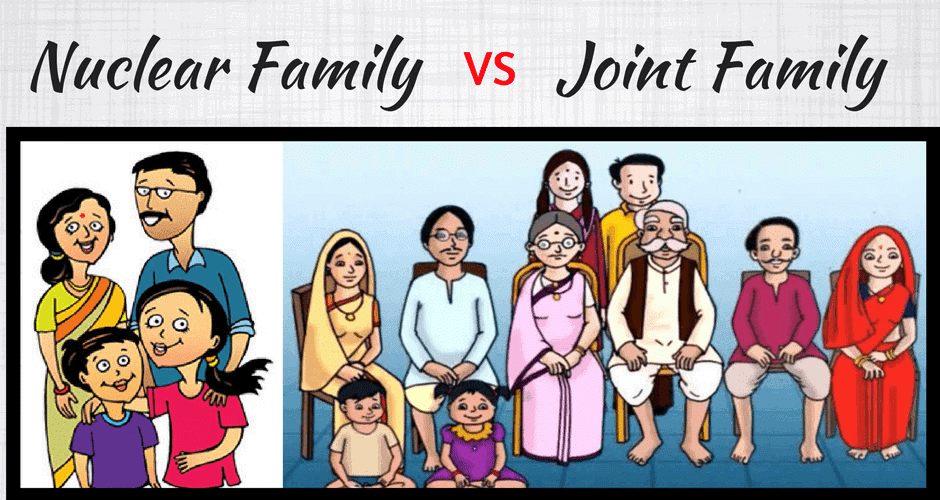
Q3: What is cooperation in a family, and why does it matter?
Ans:
Cooperation in a family means all members work together to fulfil their roles and support each other.
Parents raise children, while children contribute by helping with chores or taking care of siblings.
Cooperation fosters love, interdependence, and unity, making the family strong.
It ensures the household runs smoothly and helps children learn the value of teamwork and mutual support.
Q4: What values do children learn in a family?
Ans:
In a family, children learn values such as ahimsa (non-harming), dāna (giving), sevā (service), and tyāga (sacrifice).
Children observe parents and siblings putting family needs ahead of their own.
These values are taught through everyday actions and interactions, shaping children into responsible and caring individuals.
Family life is where these values are passed down, helping children internalize them and apply them in the world.
Q5: How does a family show support during festivals?
Ans:
Families often show support by sharing what they have during festivals.
For instance, they may buy clothes for everyone in the family, including those who are struggling financially.
This reflects the values of love, sharing, and sacrifice, as family members support each other in times of celebration.
Such acts demonstrate the spirit of unity and care that binds families together.
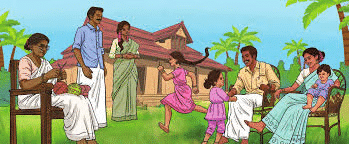
Q6: How do grandparents contribute to a family?
Ans: Grandparents often share wisdom, help with daily chores, and provide emotional support. They may assist with tasks like homework, provide care during difficult times, or help the family stay connected to traditions and values. Their experiences and guidance enrich the family dynamic.
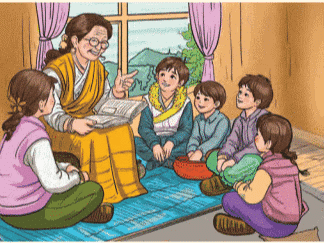
Q7: How did the Bhil community use halma to fight water scarcity?
Ans: In Jhabua, the Bhils used their halma tradition—helping in crises—to plant thousands of trees and dig trenches for rainwater, as per the chapter. Unpaid, they served Mother Earth, easing water shortages. Mahesh Sharma’s Shivganga work earned a Padma Shri in 2019, showing how their community effort turned hardship into hope.
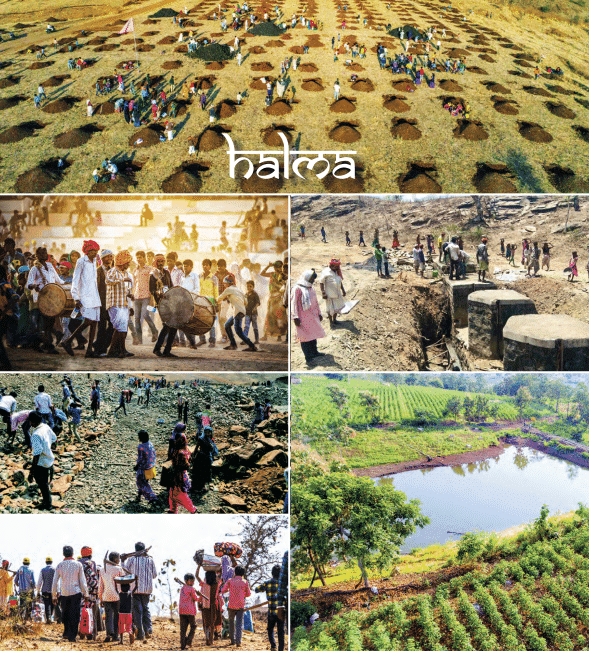
Q8: What did communities do during the Chennai floods of 2015?
Ans: During the 2015 Chennai floods, when roads became rivers and shops shut, spiritual and religious groups cooked and shared huge amounts of food with those in need. This showed community strength—people uniting selflessly to help, proving that in tough times, collective care can lift everyone up.
Q9: How did Kamal Parmar support his community in Ahmedabad?
Ans: Over 20 years ago in Ahmedabad, Kamal Parmar taught 150 underprivileged kids nightly after work, giving free dinners too, per the chapter. Starting with street children, his classes grew with help from teachers and student volunteers. His selfless act sparked learning and love, showing one person’s care can build a strong community.
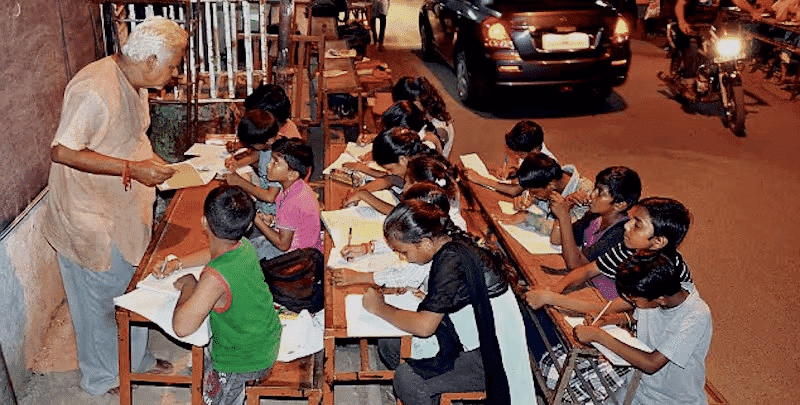
Q10: What are Residents’ Welfare Associations, and what do they do?
Ans: Residents’ Welfare Associations are urban communities making rules for shared living, like waste management or pet care. People join to set these guidelines, depending on traders and municipal workers for trash. They show how modern city groups work together, balancing duties to keep their areas clean and friendly.
Long Question Answers
Q1: Why is the family unit important, and what types exist in India?
Ans:
The family is the bedrock of society, where individuals first learn to live together, share, and grow.
It is important because it shapes values, fosters emotional bonds, and provides stability.
There are two main types of families in India:
Joint Families: Includes grandparents, parents, uncles, aunts, and cousins living together, creating a lively, intergenerational household.
Nuclear Families: Comprises parents and their children, often living separately, suiting modern lifestyles.
Both types of families emphasize cooperation, mutual respect, and support for one another.
Indian languages reflect this familial closeness, where relatives are considered brothers and sisters, emphasizing unity.
Through values like ahimsa and sevā, families help shape individuals into caring, responsible members of society.
Q2: How do family members share roles and responsibilities?
Ans:
Family roles are shared to maintain harmony and balance within the household.
Parents: Primarily responsible for providing for the family’s needs, including food, shelter, and education.
Children: As they grow, they take on more responsibilities, such as helping with chores or taking care of younger siblings.
Grandparents: Often provide wisdom, emotional support, and help with daily tasks.
Cooperation ensures that everyone’s needs are met and that the family functions smoothly.
This division of labor strengthens family bonds, teaches children the importance of contributing, and ensures that no one feels burdened by responsibilities.
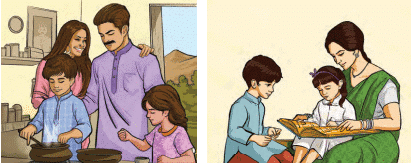
Q3: What is a community, and how does it function in rural settings?
Ans:
A community is a group of people who share a common interest or are connected by a geographical area.
In rural settings, communities often come together to work on shared goals, like farming, building, or celebrating festivals.
Shared Resources: Communities manage shared resources like water, grazing land, or forest produce.
Mutual Support: In times of crisis, like droughts or natural disasters, communities unite to support each other, whether through collective work or providing resources.
Communities are built on the values of interdependence, sharing, and helping others, making them vital to rural life and survival.
Q4: How do urban communities, like Kamal Parmar’s initiative and Residents’ Welfare Associations, support their members?
Ans:
In urban communities, people come together to support each other through formal and informal networks.
Kamal Parmar’s initiative: He provided free education and meals to underprivileged children in Ahmedabad, showcasing the power of community-driven support.
Residents’ Welfare Associations: These associations focus on managing shared urban spaces, such as waste management, cleanliness, and common area upkeep.
Interdependence: These urban communities rely on traders, municipal workers, and other residents to maintain the community's health and well-being.
Urban communities may not have the same physical closeness as rural ones, but they are equally vital, offering support and creating spaces for collaboration and growth.
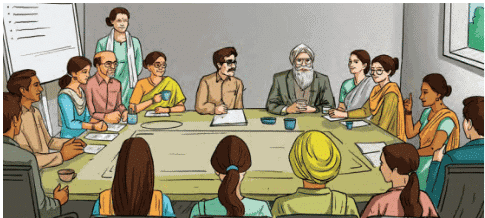
FAQs on Short & Long Question Answers: Family and Community - Short & Long Answer Questions for Class 6
| 1. What is the importance of family in our lives? |  |
| 2. How does community influence individual behavior? |  |
| 3. What are the different types of families found in society? |  |
| 4. How can families support each other in times of need? |  |
| 5. What role do community activities play in strengthening relationships? |  |






















